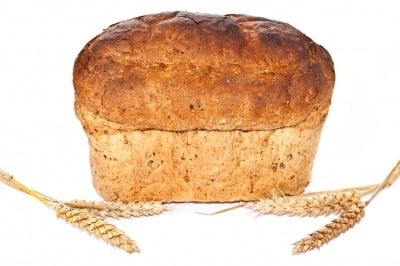
The flavour of bread may seem a peculiar characteristic to focus upon because we all know really what bread is and how it is meant to taste. The reality is that bread flavour can be a difficult quality attribute to get right.
Why is this ?
Well, bread is a fermented product in the first instance. Fermentation of any food stuff using yeast generates flavours which were not there before. Flour and water are almost free of any particular taste in their own right. Blandness isn’t in it when it comes to eating a ball of dough. As soon as we add yeast to leaven the bread we start building up a series of complex flavour molecules which will form the basis of bread taste.
We then have the other raw ingredients to consider. Any flavour in the flour actually comes from lipids and oils which have been released from the germ which is the embryo of the seed along with any bran particles that remain. White flour is especially bland but as soon as we add other flours which are slightly rougher like wholemeal, bran, any germ enriched white flour and the bread takes on a whole new level of flavour complexity.
Salt is always added to differing degrees. It is a strong flavour modified in its own right. Not only do we sense a ‘salty’ flavour i the bread which is especially noticeable when there is too much, but it also alters our perception of other flavours. Salt levels in all baked goods alter depending on the type of fermentation we employ and the level that is needed to produce a positive functional effect on the flour proteins. It also depends on our cultural differences and how much salt flavour we would enjoy. A pretzel for example has to have some salt coating for example to create a characteristic flavour impact.
Yeast is a great flavour changer. yeast itself contains vitamins and minerals along with a host of other compounds which all contribute a flavour in their own way. Yeast flavour is quite unique and we recognise it very often.
The other ingredients which can be added include milk, sugar, malt, fruit and in fact any other ingredient which makes the bread unique.
Going back to fermentation is part of the process and this is another element of flavour creation. Not only do we have fermentation but also baking using heat which creates another set of cooked flavours. Fermentation as well as baking all modify existing flavour molecules but or produce new ones. The dough is the basic flavour generating substrate but how the yeast convert those basic starting blocks is part of the wonderful almost secret nature of bread making. The intensity of flavours and aromas in particular is due to how yeast convert the many substrates available to them. The fermentation notes increase as time progresses and it is a process that takes a few hours for the flavour profile to truly be generated.
Microbial activity in the dough produce what are called acid flavour notes. These are especially noticeable in the bread crumb which is the main body of the bread. We don’t just have added baker’s yeast to thank, there are many natural airborne yeasts and bacteria which are part of this mix. Sourdough is a classic example of the impact that lactic acid bacteria have on bread flavour and which produce that unique ‘sourdough’ flavour profile.
If time is not available to the bakes for adequate fermentation then it is good practice to develop the flavour of bread through a ‘pre-ferment’, a ‘sponge’ or a ‘brew’. These are prepared materials which are later miced with other added ingredients to create the dough for final processing and baking.
The art of baking is felt to be the most important process generating the flavour of bread. The contribution it makes is to not only create flavour impressions on the tongue but an aroma too. How often do we notice the aroma of the bread crust for example when we walk down the supermarket aisle. In this heating phase of bread making, lost of new compounds are being formed as well as driving off some of the existing aromas. The most noticeable impact is the formation of the aroma-laden crust which is also darker and distinctly brown. It is thought that over 80 per cent of bread flavour and aroma is contained in the crust. The chemical process we refer to here is Maillard browning. The products of Maillard browning are some of the most interesting impactful chemicals we can ever expect to find in a food. They are so important that we can immediately distinguish a baked food of any kind from an unbaked one.
When it comes to sensory analysis, bread must be one of the most commonly examined foods of all. We are very sensitive to baked flavours and we judge the quality of bread on that basis. Not only texture but aroma are two key factors in us deciding for example how old a bread is. The stronger the initial aroma the more likely we are to find the bread fresh.
Analysis In The Flavour Of Bread
Over the years we have produced lots of analytical data using instrumental methods combined with sensory techniques to generate a huge body of knowledge. All of the wheat bread compounds which make up aroma have been identified using gas chromatography combined with mass spectroscopy (GC-MS). I dare say there are still a few though waiting to be uncovered as we look at different ingredients for bread making.


Leave a Reply